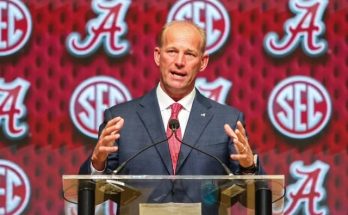If you’re one of the millions who’ve found yourself tuning into the WNBA for the first time in 2024 or 2025, captivated by a blazing three-pointer or a dazzling dime from a blonde phenom in an Indiana Fever jersey — you’re not alone. Hands in the air if you started watching the WNBA because of Caitlin Clark
The Caitlin Clark Effect is real, measurable, and redefining what women’s sports — and the WNBA in particular — mean to mainstream audiences. The former Iowa Hawkeye, NCAA all-time leading scorer, and electrifying playmaker has turned college basketball viewership on its head and is now sparking a long-overdue explosion in attention, revenue, and cultural relevance for the WNBA.
This article is a celebration and a reflection. It’s for the new fans. The ones who never thought they’d care about Tuesday night matchups in May. The ones who found themselves Googling WNBA rules. The ones who bought a Fever jersey before ever seeing Tamika Catchings highlights. You’re not a bandwagoner — you’re part of a revolution. And it started with Caitlin Clark.
The Origin Story: From Iowa City to Indiana
To understand the Clark effect, you have to understand her journey.
Caitlin Clark’s time at Iowa wasn’t just impressive — it was seismic. She averaged over 28 points per game across her four-year college career and shattered Pete Maravich’s all-time NCAA scoring record, men’s or women’s. Her deep threes, often taken just inside half court, became appointment viewing. Her competitive fire made every game feel like an event. Whether you were watching for her buckets or rooting against her swagger, she commanded your attention.
By the time Iowa reached back-to-back Final Fours in 2023 and 2024, Clark wasn’t just a star — she was a cultural lightning rod. Drake was at her games. Nike handed her a historic NIL deal. Iowa’s games posted ratings higher than some NBA contests. Clark’s last college game, a national title showdown against South Carolina, drew over 18.9 million viewers — the most-watched women’s basketball game in history.
So when the Indiana Fever won the 2024 WNBA Draft Lottery, the writing was on the wall: the WNBA’s next chapter was about to be written in Clark script.
WNBA’s Welcome Party: Ratings Surge and Sold-Out Arenas
Let’s talk numbers — because Caitlin Clark’s impact didn’t stall at graduation.
Her WNBA debut against the Connecticut Sun shattered expectations, drawing 2.1 million viewers on ESPN2 — the most-watched WNBA game since 2001. Indiana’s home opener sold out Gainbridge Fieldhouse. Fever road games? Instant sellouts. Even teams like the Dallas Wings, Phoenix Mercury, and Minnesota Lynx — already with stars like Arike Ogunbowale, Diana Taurasi, and Napheesa Collier — saw massive surges in ticket demand when the Fever came to town.
Suddenly, sports outlets that gave WNBA coverage a paragraph or two were dedicating entire sections to game recaps, highlight reels, and hot takes. Instagram and TikTok lit up with Clark clips. Her jersey became the top-selling WNBA jersey ever on Fanatics — in a matter of hours.
It wasn’t a fluke. It was a cultural moment.
Beyond the Box Score: A Gateway to the League
What’s become clear is that Caitlin Clark isn’t just boosting interest in herself — she’s a gateway drug to the entire WNBA ecosystem.
First-time viewers tuning in for Clark were introduced to other generational talents: A’ja Wilson’s dominance in Las Vegas. Sabrina Ionescu’s floor vision in New York. Aliyah Boston’s presence in the paint. Kelsey Plum’s speed. Skylar Diggins-Smith’s flair. The unapologetic trash talk of Diana Taurasi.
For many fans — especially those new to women’s sports — this was a revelation: “Wait, this league has been this good the whole time?”
That’s the magic. Clark brings fans through the front door, but they stay for the full experience. The league, which has long suffered from media neglect and underinvestment, suddenly found itself with more eyeballs, engagement, and yes — critics. But that’s part of growth.
It’s not all sunshine. She’s faced hard fouls. Heated rivalries. Some veterans have been openly skeptical of the hype. That tension? It’s compelling. It’s human. And it’s helping turn the W into one of the most watchable products in pro sports.
The Next Generation Is Watching — and Dreaming
Clark’s reach isn’t confined to TV ratings. She’s inspiring a movement at the grassroots level. Youth basketball programs report record enrollment among young girls. Social media is filled with videos of little hoopers practicing logo threes. YouTube searches for “Caitlin Clark workout” have skyrocketed.
She’s not just a role model — she’s the model. For a generation of girls who’ve never had a mainstream superstar look like them, talk like them, or dominate headlines, Caitlin Clark is living proof that women’s basketball belongs in the spotlight.
And it’s not just girls. Young boys — and adult men — are embracing her game, her swagger, and her intensity. For decades, some men dismissed women’s sports as “less than.” Clark has blown that narrative to bits, showing that excellence knows no gender.
Critics, Gatekeepers, and a Culture Shift
Of course, when someone shifts the landscape, resistance is inevitable.
Some WNBA purists worry about the “Caitlin Clarkification” of coverage — that the league’s marketing is becoming too centered on one player. Others point to her whiteness as a factor in her media favoritism, especially compared to Black stars who have dominated the league for years with less fanfare. These are real, uncomfortable conversations — and necessary ones.
Clark, to her credit, has tried to share the spotlight, consistently praising her teammates and league veterans. But she’s also navigating a landscape that hasn’t always been ready for her level of stardom. The WNBA, for better or worse, is still adapting to its new face.
What’s clear is that the league’s culture is evolving. There’s more discourse. More fans. More passion. More friction. But that’s what growth looks like. The NBA didn’t become a global phenomenon without Magic vs. Bird, Jordan vs. Isiah, or LeBron vs. the world. The WNBA now has its own rising cast of characters and compelling storylines. Clark didn’t invent the game — but she’s helping take it to heights it’s never seen before.
So… Is It Just a Fad?
The question lingers: Is this a flash in the pan?
Unlikely.
Clark is just getting started. She hasn’t played her 10th game yet. She’s already made Team USA’s training pool. She’s likely headed for All-Star status as a rookie. And she’s lifting the Indiana Fever — a franchise that’s been dormant since Tamika Catchings retired — back into relevance.
But more importantly, she’s not alone. The 2024 rookie class includes fellow NCAA stars Angel Reese, Kamilla Cardoso, and Cameron Brink. Paige Bueckers is set to enter the league in 2025. The pipeline is loaded. Clark may be the face now, but she’s part of a generation that’s coming for everything.
And if the WNBA continues to capitalize on this moment — with better media deals, more equitable pay, and deeper investment — the Clark boom won’t just be a moment. It’ll be the start of an era.
Welcome to the W — Stay Awhile
So yeah — hands up if Caitlin Clark is the reason you’re here.
But keep them up for A’ja Wilson. For Breanna Stewart. For Skylar Diggins-Smith. For Lisa Leslie, Sheryl Swoopes, and Tina Thompson. For everyone who paved the way so that when Clark stepped onto the court, the lights were finally on.
The WNBA is bigger than one player — but it only takes one to spark a revolution.
And it’s only just beginning.
TL;DR Recap (for the scrollers):
- Caitlin Clark has transformed WNBA viewership, with millions tuning in for the first time.
- Her debut shattered ratings records, and her presence is driving ticket sales and merch revenue league-wide.
- She’s introducing fans to an entire league of talent — A’ja Wilson, Breanna Stewart, Kelsey Plum, etc.
- There are valid concerns about overexposure and racial bias in coverage — but growth brings complexity.
- Youth basketball, especially for girls, is booming because of Clark’s influence.
- This is not a flash in the pan. The WNBA is leveling up — and Caitlin Clark is just the start.



